Manon Pasomsat
Mahidol Wittayanusorn School
The worlds of science and art may seem vastly different, but both disciplines are about understanding nature and expressing creativity. At the International Students Science Fair (ISSF) 2025, we were proud to present a harmonious fusion of these two worlds through artwork inspired by high school science projects.
Transforming scientific concepts into art provides a unique platform for young minds to express their understanding and imagination in diverse ways. This approach reflects the core processes of critical thinking, inquiry, and creativity that lie at the heart of both science and art.
At ISSF 2025, students from all over the world had the opportunity to present their work integrating science and art concepts, inspiring visitors and science students to see the potential of interdisciplinary learning, not only to create deeper understanding, but also to create a creative and innovative society that can move the world forward.
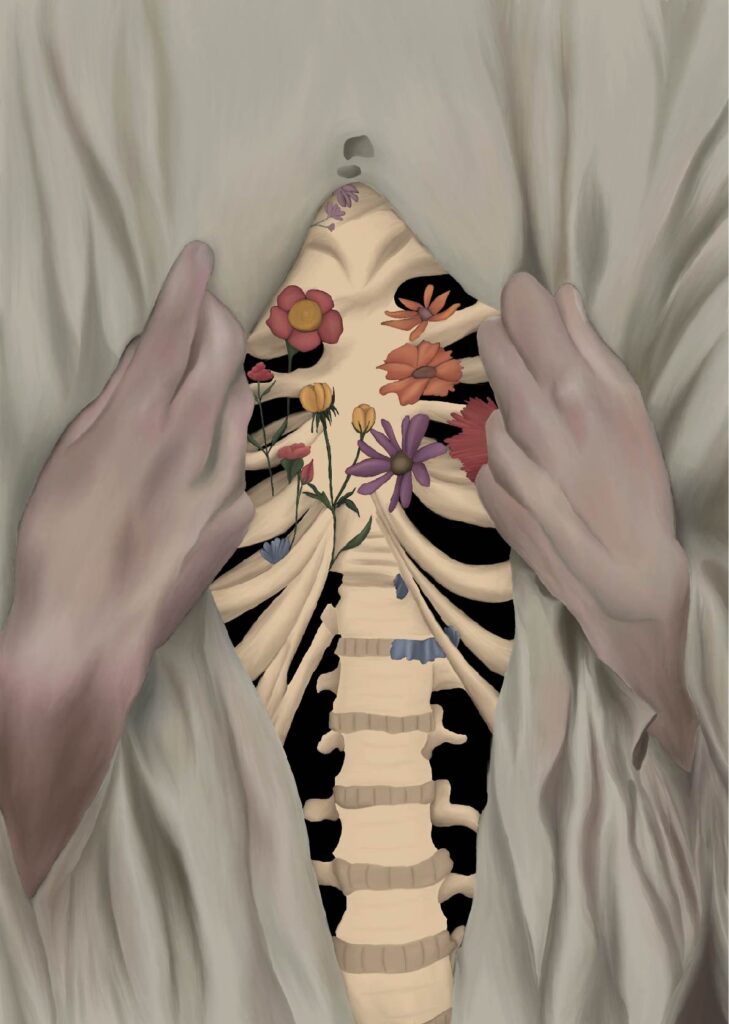
Title: Hope
Size: 42 x 59 cm
Technique: Digital Painting
Artist: Warada Jongjeerawongsa, Peradol Saechueng, Chaidit Limkanjanachot
School: Mahidol Wittayanusorn School, Thailand
Concept:
Cancer is one of the major health problems encountered today. According to the study statistics, it is found that the number of deaths and cases increases a lot each year. Precision cancer treatment is therefore very important. There are many cancer treatment methods that have been developed. However, immunotherapy has attracted great interest due to the specificity of the binding between the antibody and antigen. Immunotherapy requires the use of monoclonal antibodies, of which trastuzumab is one such monoclonal antibody. Its use for the treatment of HER2 receptor-positive cancers is widespread. However, producing full-length antibodies is difficult, complicated, and very expensive. Therefore, we suggested a novel peptide drug to be used as an alternative to trastuzumab for the treatment of HER2-receptor cancers, based on the amino acid sequences that emerge in the complementarity determining regions (CDRs) which have specific binding properties between trastuzumab and HER2 receptor. Our breakthrough idea of this study can lead to the development of new innovations based on the amino acid sequences information that have specificity for binding to other receptors on other types of monoclonal antibodies, which could be used as a model for effective treatment as well as drug design and production along with other types of diseases.
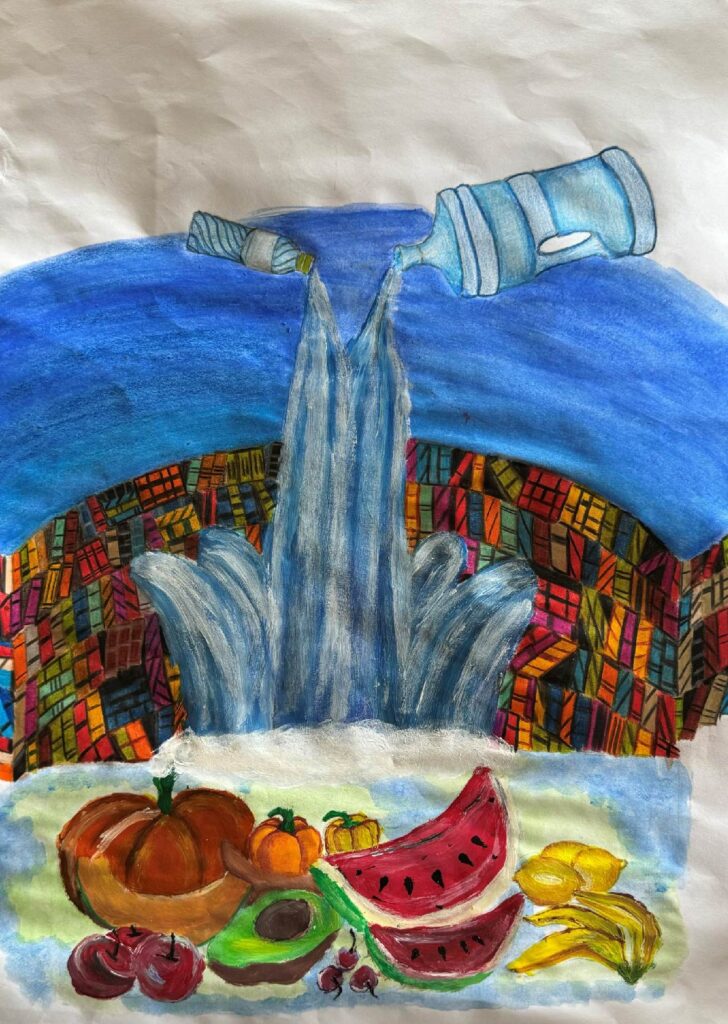
Title: Breaking Barriers
Size: 42 x 59 cm
Technique: Painting on Canvas
Artist: Savannah Ndeta, Lydia Ineza, Kweku Kipchirchir
School: Brookhouse School, Kenya
Concept:
Educating the population on effectively using plastic waste to grow vegetables and fruits (farming) through a sustainable hydroponics system.
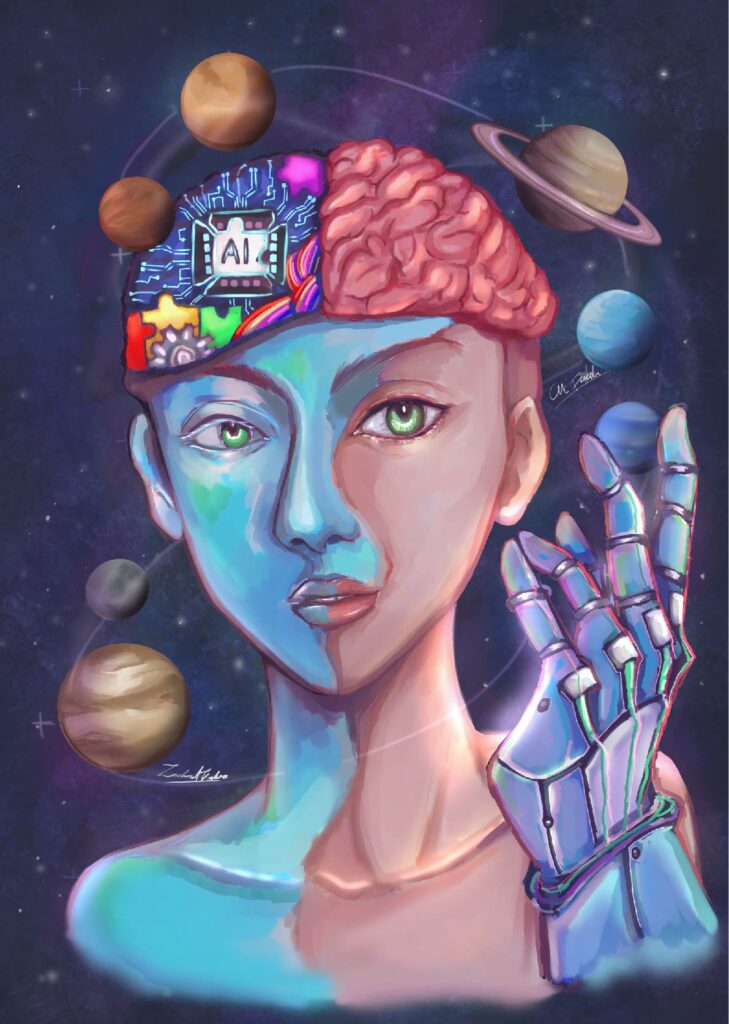
Title: Humanity in the Digital Cosmos: The Impact of AI
Size: 42 x 59 cm
Technique: Digital Painting
Artist: Azzahra Herheinisa Hadna, Cut Farrah Fathani
School: Budi Mulia Dua International High School, Indonesia
Concept:
Artificial Intelligence (AI) has significantly impacted many aspects of life, bringing both benefits and challenges. It enhances industries, healthcare, and media by processing large data sets quickly and making information more accessible. However, AI also causes job displacement, lacks creativity and emotional depth, raises privacy concerns, and increases dependency. This artwork illustrates AI’s powerful impact on humanity and our planet. The central figure is a blend of human, Earth, and AI elements, showing how deeply technology has become a part of our lives. The figure’s brain, where human thought merges with a digital AI chip, symbolizes AI’s growing influence. The robotic hand represents humanity’s gradual transformation through AI-driven technologies, extending human capabilities. The planets orbiting around the central figure reflect the vast reach and potential of AI. The cosmic background portrays the limitless knowledge and possibilities AI brings to humanity, as well as its broad impact on Earth. This artwork encourages viewers to consider both the benefits and challenges of AI, inviting us to reflect on our future as we progress in the digital cosmos alongside AI, and prompting us to think about how it will shape our roles, skills, and our connection to the planet.
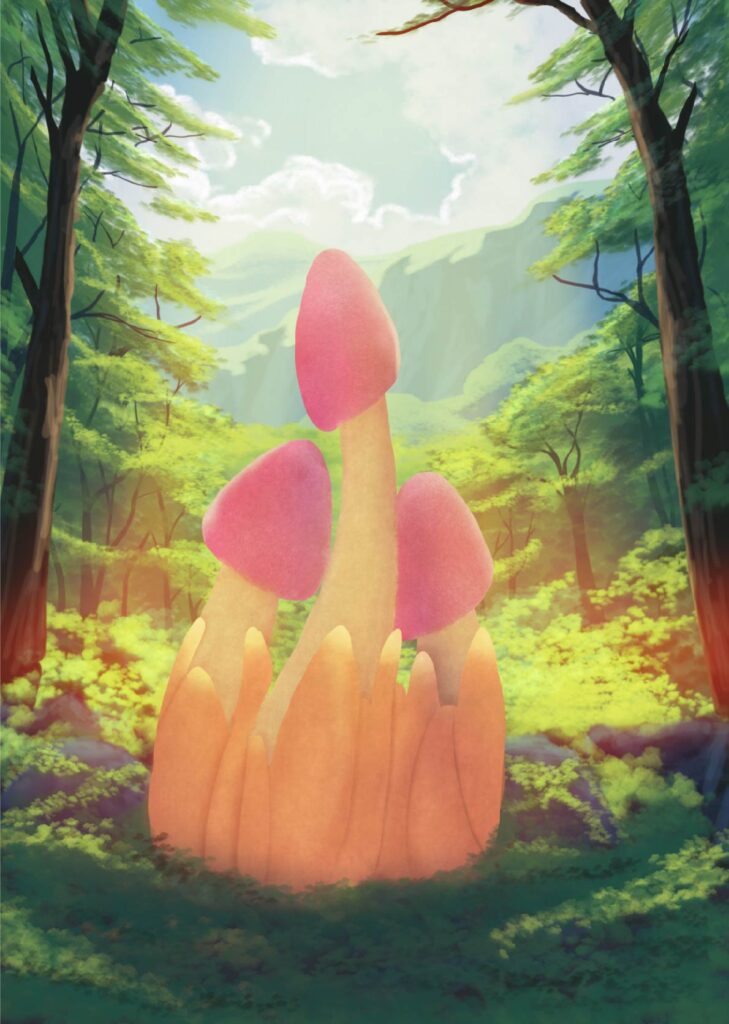
Title: Discovery
Size: 42 x 59 cm
Technique: Digital Painting
Artist: Natthapruek Sakdapipanich
School: Mahidol Wittayanusorn School, Thailand
Concept:
Discovering a rare specimen like the plants in the genus Balanophora can be a tough task, but the reward is unparalleled. Whether nestled in shrubbery or hidden beneath a pile of leaves, finding it feels almost magical—like a beam of light illuminating the plant, showcasing its rarity and significance.

Title: Aliquat 336/Menthol
Size: 42 x 59 cm
Technique: Digital Painting
Artist: Elizaveta Kogut
School: Moscow South-Eastern School named after V.I. Chuikov, Russia
Concept:
The key compound in my project is Aliquat 336, which resembles a jellyfish. Quaternary nitrogen is the head, and hydrocarbon tails are tentacles. Menthol is embedded in corals. Jellyfish seem to stretch their heads towards the OH group, as well as positively charged nitrogen. Flasks with metal solutions, which I use in my work, are scattered along the seabed like sunken treasures. And all together, the seabed represents a peaceful ecosystem, which refers to the global goal of my project — the environmentally friendly recycling of Lithium-ion batteries.
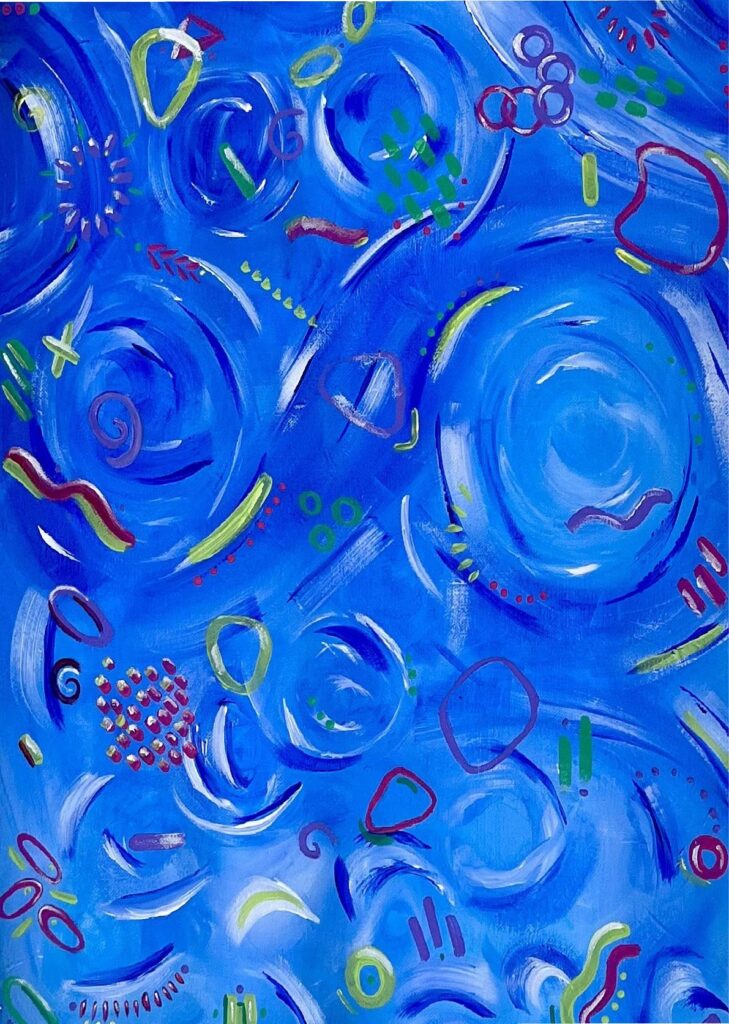
Title: Water
Size: 42 x 59 cm
Technique: Painting on Canvas
Artist: Caroline Escobedo
School: West Aurora High School, USA
Concept:
The inspiration for my drawing was the idea of the water we see from the visible eye and what we can see under the microscope. Overlaying them together gives a new perspective.
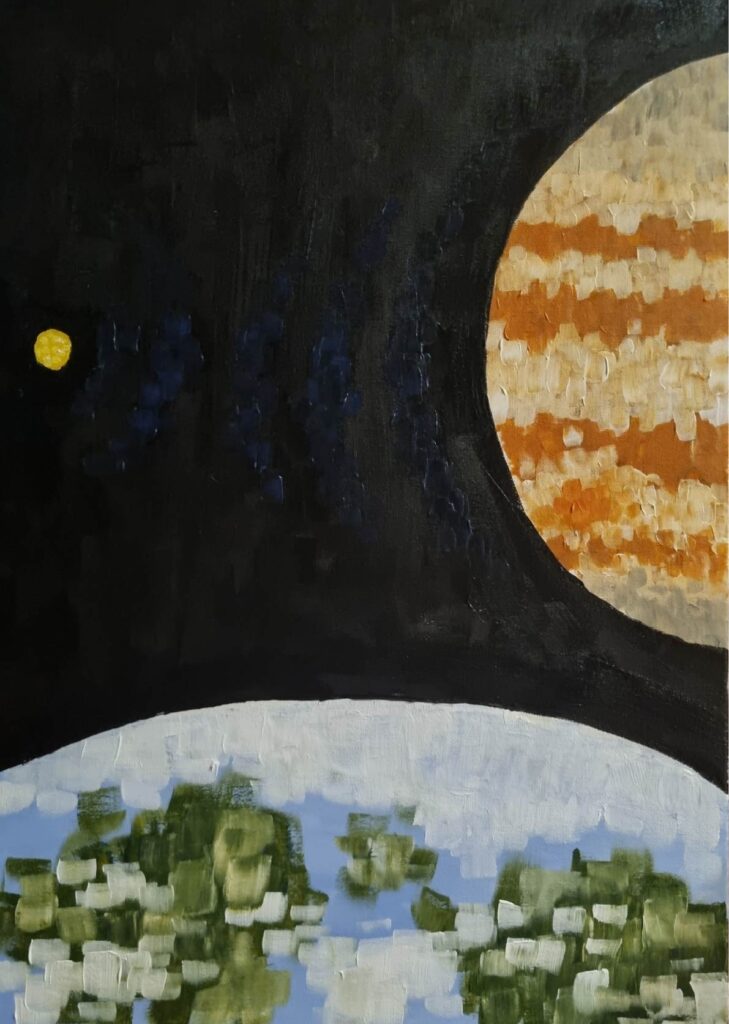
Title: Jupiter and Io
Size: 42 x 59 cm
Technique: Painting on Canvas
Artist: Zara Zulkanain
School: John Monash Science School, Australia
Concept:
The interaction between Jupiter and Io can be detected on Earth. This image encapsulates the essence of the project while ignoring the scale and complexity of the situation. In your imagination there is an invisible thread that connects these objects. The foreground grounds the observer on Earth.


